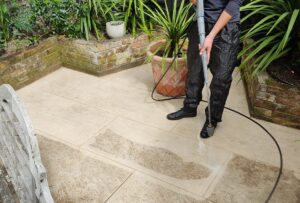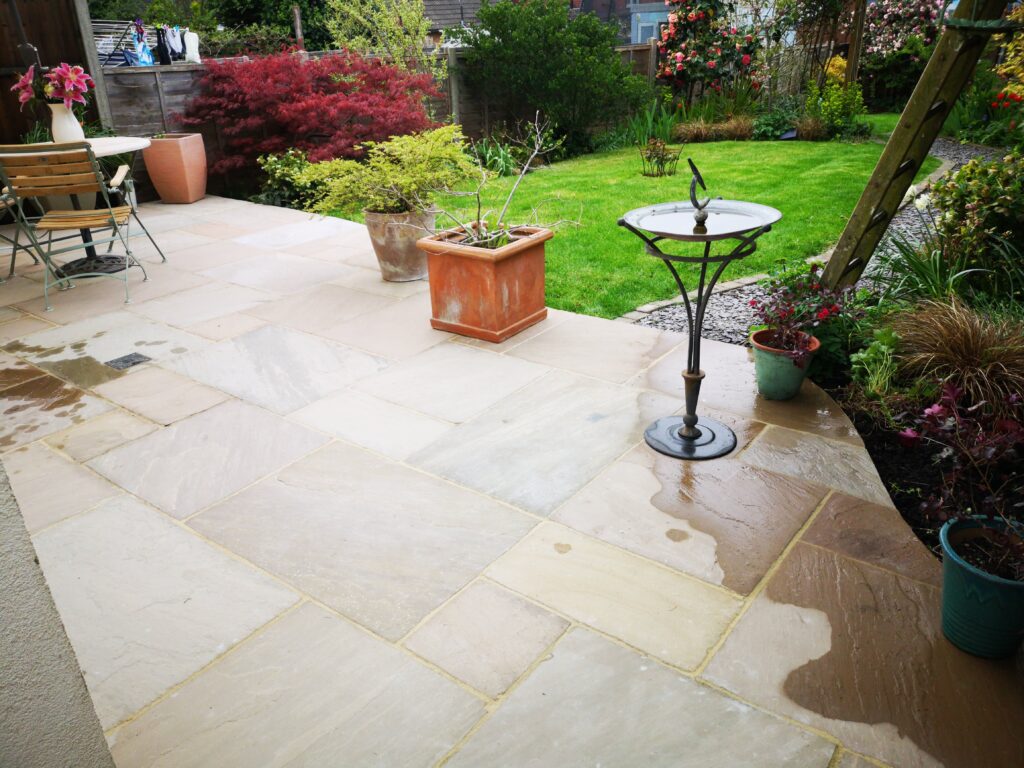

Gardening is one of the best hobbies you can have. It is interesting, it can be perceived as an exercise and it provides you with the perfect relaxation place at your home that you can also enjoy with your friends and family. However, in order to have a beautiful and healthy garden, you need to take good care of it. It’s not rocket science, we promise. But follow the following gardening tips and you will enjoy a lush garden for a long time.
Understanding the significance of watering plants is essential for successful gardening. Each plant species possesses its unique water needs, demanding specific attention to watering frequency.
Optimal watering times contribute to water retention. Preferably, water plants early in the morning or during the evening when soil temperatures are cooler. Avoid midday watering on hot days to prevent rapid evaporation.
Customize your watering schedule to the seasons. Hotter days may require daily watering, while winter necessitates less frequent sessions. Always account for the plant species in your garden and the local rainfall.
Adopt cautious watering practices to protect your garden’s health. Water gently to avoid soil disruption, and ensure leaves are not overly wet to prevent mold and fungal diseases.
Direct your watering efforts to the soil and roots. For newly planted seeds, a careful sprinkle suffices. Be wary of using a hose or forceful water stream that may displace seeds or cause clustering.
Consider installing an irrigation system for convenience. Micro-irrigation systems, like drip irrigation, are eco-friendly options that can save up to 60% of water while maintaining soil moisture.
A soaked soil area around the plant stem indicates successful watering. Watch out for mold or moss growth, which indicates overwatering. Conversely, wilting, brown leaves and slow growth are signs of inadequate hydration.
Adopt these watering strategies to ensure a thriving, well-nourished garden. Balancing water needs leads to vibrant, flourishing plants that enhance your outdoor space.
They are different kinds of soil and they need a different kind of care:
Using a spring-tinned rake, you can remove thatch and moss. And using a garden fork, you can make deep holes in the soil every 10 cm, so water and nutrients reach the roots easier. Then you can plant seeds, use garden fertilizer, and water it regularly until the grass grows. You can also have a gardener put turf in your garden.
You need to make sure your lawn is protected from the hot water. Up to 26°C will help the plants grow, but anything above 30°C will halt growth. When temperatures rise, avoid cutting the lawn too short. Leave it about 5 cm in order to protect the soil from drying out under the sun.
Your lawn also needs regular watering. Generally, you can use 10-15 liters of water per square meter. Drip irrigation can help you with timings and avoid over-watering the lawn.
Soils have the tendency to lose their properties with time resulting in a low capacity to sustain plants. When that happens, it means that your soil needs replacement. Find out more about lawn care from one of our previous articles on our blog.
Weeds use the resources that your plants need and can kill your garden quickly. They can also harbor pests and diseases, so it’s critical that you avoid having weeds in your garden. To prevent them from growing, plant beds densely and that will reduce the space available for them to sprout. The usage of mulch will also prevent weeds from growing. If it’s too late and you already have weeds in your garden, you should remove the roots by using a weeding trowel.
Most gardens have different furniture and structures like patios, tables, chairs, fountains, desks, etc. Depending on the materials that they are made of, they need different types of care. In general, it’s good to keep them dry. Moisture can freeze during the winter and cause damage by breaking the material. Even if doesn’t freeze, moss can grow on your furniture. Also, regularly check your fences, sheds, and gates for signs of rotting. Repair them as soon as possible, before further damage is done.
Pests and diseases can easily kill every plant in your garden, so preventing them to grow in your garden is critical. Some of the pests that you should look for are mites, aphids, bugs, whiteflies, and gnats. Some of them are attracted by weeds, so by just preventing weeds, you will also prevent pests. Other bigger pests can be avoided by installing barriers and traps. If you start getting pests, use the appropriate pesticides to eradicate them. Also, you can remove the highly affected plants from your garden.
When it comes to diseases, most of them are caused by fungi, bacteria and viruses. Those diseases include white rust, bacterial leaf spot, ovulinia petal blight, and anthracnose. You can prevent fungal diseases by avoiding overwatering your garden. And you can prevent bacterial and viral ones by using clean pruning and weeding tools. If, however, your plants are infected by a disease, you will need to use chemicals to kill the microorganisms that cause diseases.
Your plants will take up a lot of care if you want to grow them healthy.
Pinching refers to the process of removing the stem tips of the plants in order to encourage lateral and healthy growth. It also helps your plants to branch out more and have a good formation of more flowers. And pruning is the process of cutting back the overgrown branches in order to control the growth and form the shape of your plants better.
Thinning is when you remove the additional plants in order to create space for the rest. This is needed when your plants don’t get enough resources and nutrients. Culling is the process of removing unwanted plants which are weak, diseased, or infested. This is again done to make more room for the rest of the plants but also to control pests and diseases.
If some of the plant stems need support, you can put stakes and rods in the ground and tie the stem to them. It will also help them grow in a given direction.
You need to deadhead your plants when the flower heads are old or dead. This will encourage the plant to bloom again. You can use your fingers or a shearing tool to remove the flower heads.
As we mentioned earlier, cleaning your garden tools will prevent your plants from catching diseases. So, make sure that your weeding and pruning tools are being cleaned before and after use. You can disinfect the tools with disinfectants like chlorine bleach, isopropyl.
We mentioned mulching earlier and for those who don’t know what that is, mulching refers to laying down organic materials on the soil. It improves the retention of moisture, regulates temperature, prevents erosion, and reduces the chances of diseases. If you put organic material that is 3-4 inches and reapply it, it will prevent the sprouting of weeds.
You can use hay, leaves, straw, sawdust, wood chips, paper, bark, grass clippings, or any other organic material for mulching. The ideal time for applying it is in spring, but not before it’s already warm outside. Putting it down too early will delay the warming of the soil. The best timing would be when the soil is 18°C at least 4 inches deep.
You need to make sure that your plants are getting enough sunlight as a source of energy. Get familiar with your plant’s needs before placing them in certain spots in your garden. Some plants need more sun the others. If they need a lot of sun, place your plants away from tall buildings and trees. On the other hand, if they need more shade, place vases or a barrier or anything else that can block the sunlight during parts of the day. Finally, when there is a heat wave, make sure all your plants get shade to avoid them from drying out under the sun. Have a shade cover in hand for that purpose.
And as the winter approaches, there are a few things you can do to help you with protecting your garden during the cold temperatures. Do a final clipping of the plants in September or early October in order to leave them neat. You can put the garden beds to sleep for the winter with a deep mulch of well-rotted compost. Avoid walking on frosty lawns because it can damage the grass underneath. Root balls can be pushed out of the ground by the frost, so keep an eye on them. If heavy snow falls, regularly brush it away from tree branches and plant leaves.
Pests, wild animals, and domesticated pets are all potential preditors in your garden. No matter if done on purpose or not, animals can damage plants and installations. That is why you need to consider installing efficient garden protection, like a barrier.
In most cases, putting up a wire fence is enough to keep most wild animals, critters, and pests away from your garden. Row covers are a great alternative decision for winter months. If you are faced with a rodent problem, you might need to consider putting catch-and-release traps around your garden. Mulching is a viable way to protect the soil and roots from pests.
One of the basic principles of gardening states that taking care of your garden starts with taking care of the garden soil. Indeed, a low-nutrient compacted soil with bad drainage properties is the gardener’s nightmare. In those cases, garden aeration can help change the narrative. All you need to do is puncture the soil with spike aerators or plug aerators.
The process of aeration loosens up the soil, improves its penetration properties, and encourages new growth. The easier access to and absorption of water, nutrients, and air to the root system are some of the main benefits of the soil perforation process. Aeration also makes turf thicker, reduces water runoff, helps with thatch management, and preps the lawn for winter dormancy.
There you have them – some of the basics of keeping your garden healthy. If you need any help with that, however, you can always contact a professional gardener who can do your landscaping and maintain the garden. Now, make sure your plants are watered and the plants are healthy, and enjoy the beautiful space you’ve created.

Meet Nikolay, a talented blog and content writer with years of experience creating engaging and informative content for a variety of industries.


TO CELEBRATE OUR NEW WEBSITE WE WANT TO GIVE YOU
